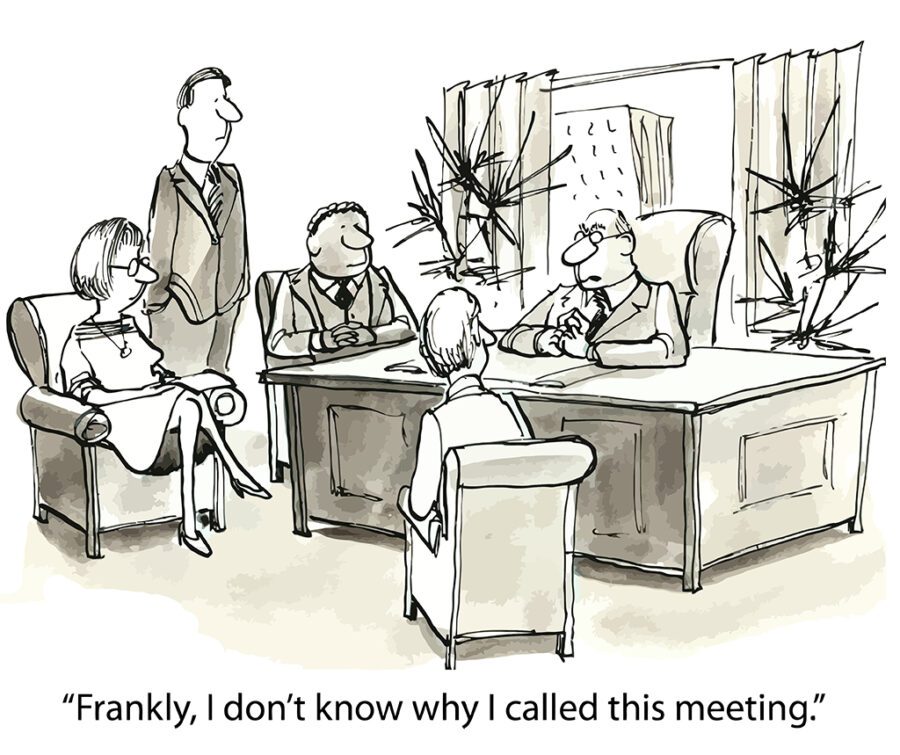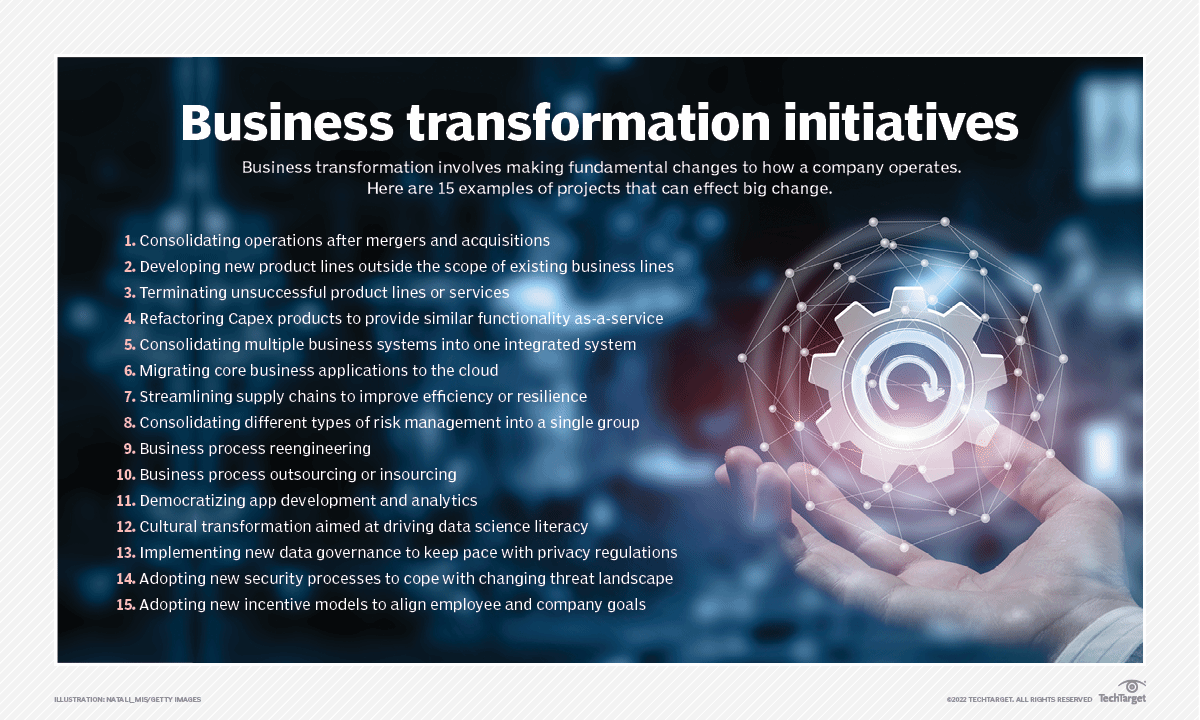
One of the more frustrating side effects of the Long Pandemic has been the rise in virtual meetings. I recently was talking with a colleague when the subject of meetings came up.
“I swear that I spend much of most days in meetings,” she bemoaned. “It wouldn’t be so bad, but so many of them are so … pointless.”
When I was working with Cliff Berg and others on Agile 2: The Next Iteration of Agile, this fixation on meetings, especially as part of Scrum, struck me as being particularly ripe for rethinking. To that end, I developed a list of questions that I think everyone who calls for a meeting should consider before actually hitting the send button with that invite.
Is it necessary to meet, or can it be done through other means?
A scrum meeting, where everyone gets together and explains where they are on their particular projects, has long been a hallmark for Agile. Twenty years ago, when you had mostly onsite development staff and few collaboration tools, it was probably not a bad idea to touch base every morning. Today, most of these meetings are a waste of time and resources (and for those across time zones, sleep).
Status meetings in general serve primarily to keep the project manager appraised of the status of a project. Consider instead using slack, Teams, or even email, and having each member of your team write up short summary of their actions from the previous day and their intent for the next day. This serves several purposes. First, it provides a running queue of actual accomplishments, not intended ones. Both the manager and the employee can refer to the log, it provides a vehicle for others to comment either publicly or privately, it does so in a way that works for introverts as well as extroverts, and if done at the end of the day it gives the employee a chance to reflect on what they’ve done and figure out next steps. If there are issues that arise from the log report, the manager can use that to schedule follow-up action, bringing in only those who need to be involved.
Is the meeting intended to innovate and brainstorm?
This is something I believe that a lot of companies get wrong. Innovation of any significance very seldom comes from group collaboration. Indeed, most innovation comes from individuals who are forced to think about problems that are outside of their comfort zone, with the operant word here being think.
In most organizations, you generally have two different types of thinking patterns – surface thinkers, who often may have idea after idea after idea without necessarily thinking through implications, and deep thinkers, who may only contribute one or two ideas in any given session but those ideas are well thought out, consider a broad number of contingencies, and are usually more implementable. Fast thinkers dominate brainstorming sessions, both in terms of ideas presented and speaking time, but they also tend to suck up the oxygen and attention from the room, keeping alternative (and potentially better) viewpoints from being heard.
A better solution, in this case, is to put out a request for proposal to those who may have a stake in the problem, requiring them to come up with a presentation deck that outlines their particular ideas that the participants can review before meetings. They have twenty minutes to make their case. The presentations are all given over the course of a meeting. The participants write up their criticisms and conclusions, then a second meeting is held in order to discuss the merits of the proposals and make a final decision.
Ideation is primarily an individual process. Meetings focus on evaluation and criticism – they are intended to find the flaws in plans, offer elaborations, annotate, and identify action items. By confusing the two, you create poor-quality plans and waste time and momentum.
Is the meeting intended to educate or inform?
How many meetings have you attended where the speaker talks to the slides, repeating every bullet that is on the screen, or worse, how many meetings have you sat through where you have to watch a video?
Some people learn content visually, some learn it verbally, some learn manually (somatically), and some learn by reading. What differentiates these modes of learning really comes down to whether you are better at processing information synchronously or asynchronously.
The synchronous learner is one who needs a single continuous narrative to follow. They like lectures (and lecturing), learn best when they can take the information in all at once and are more comfortable with verbal communication than they are with the written word.
Asynchronous learners, on the other hand, absorb information in chunks. They prefer working with the written word or with pictures, scanning new content until they find what they are looking for then diving deep into exploration. They more often are network-oriented, jumping from one topic to the next, then circling back to where they started. They are also more likely to learn from an example than from a detailed explanation.
The best possible approach to handle these different learning styles is for the speaker to record what they are intending to present ahead of time, then to provide links to the medium along with both synchronous and asynchronous channels for feedback.
Are all the participants in the same time zone?
This becomes especially important as well when dealing with different time zones, which represents the other manifestation of synchronous vs asynchronous communication. I have been involved in meetings where participants were in London, New York, Seattle, Romania, and Hyderabad all simultaneously. Most of them were dead on their feet, either connecting before dawn or after midnight. Unsurprisingly, very little was accomplished at the meetings that couldn’t have been accomplished more readily by sending out a pre-made video message and letting everyone provide feedback asynchronously.
Does a clear goal exist for the meeting?
One of the biggest problems that corporate meetings possess is that the planners of such meetings go into them without clear goals in mind. A kickoff meeting usually involves introducing the participants of a working group to one another and setting expectations. A planning session involves establishing a clear path forward for action. A decision-making meeting involves the making of a well-considered decision. These should be timeboxed to take as little time as possible, should have a clear deliverable in mind, and should, whenever possible, provide asynchronous alternatives for those that aren’t immediately available.
All too often people set up meetings as work sessions. From both personal and anecdotal experience, these are seldom that productive, and often can be side-tracked fairly easily because there are no clear-cut goals. Most meetings should include an escape clause – let participants provide information and possible opportunity for feedback early, then if their involvement is no longer necessary give good breakpoints to let them move on to more productive activities.
Finally, meetings should be scheduled in such a way that they are clustered together over two or three days, letting people use the remaining days to focus on in-depth creative work. One idea I’ve seen work well is the notion of a meeting budget – people have a specific per hour cost (which doesn’t necessarily reflect their salary) for pulling into meetings, and if the total meeting cost exceeds their meeting budget, then the excess comes out of their operational budget.
Let’s table this discussion
In the end, meetings cost money, and unless they achieve some measurable business objective, that’s money wasted. By cutting down on unnecessary meetings, eliminating those that exist primarily for grandstanding and corporate political games, and ensuring that the artifacts of such meetings can be used in production and decision making, everyone wins.
In Media Res,
Kurt Cagle
Community Editor,
Data Science Central
To subscribe to the DSC Newsletter, go to Data Science Central and become a member today. It’s free!
Data Science Central Editorial Calendar
DSC is looking for editorial content specifically in these areas for May 2022, with these topics having higher priority than other incoming articles.
- Autonomous Drones
- Knowledge Graphs and Modeling
- Military AI
- Cloud and GPU
- Data Agility
- Metaverse and Shared Worlds
- Astronomical AI
- Intelligent User Interfaces
- Verifiable Credentials
- Automotive 3D Printing
DSC Featured Articles
- The Advent of Killer Robots Stephanie Glen on 04 May 2022
- Seven data-centric architecture innovations that businesses can’t afford to overlook Alan Morrison on 04 May 2022
- Do regulatory data projects really need design-time data lineage? Probably not. Markus Buhmann on 04 May 2022
- Today’s Data Purgatory and a History Lesson from the Energy Industry Alan Morrison on 04 May 2022
- Handling SQL Server Database Corruption When Your File System Fails Karen Anthony on 04 May 2022
- The executable digital twin ajitjaokar on 04 May 2022
- Some Helpful Tips to Choose the Best Domain Registrar Karen Anthony on 04 May 2022
- Green Banking for Sustainability and Responsible Environmental Protection Evan Morris on 04 May 2022
- Benefits of Data Governance Indhu on 04 May 2022
- Smart Cities of the Future- Powered by IoT Nikita Godse on 04 May 2022
- Business Model Transformation: Keys to Monetizing the Edge Bill Schmarzo on 04 May 2022
- Is Detailed Design Anti-Agile? Howard M. Wiener on 04 May 2022
- 5 data trends business leaders should anticipate in 2022 Lewis Wynne-Jones on 04 May 2022
- Are PDF Documents a Thing of the Past? Vincent Granville on 02 May 2022
- How Power BI Applications Are Reshaping The Healthcare Industry ImensoSoftware on 01 May 2022
- Hyperloop Technology- Advancing into the Future Nikita Godse on 01 May 2022
- DSC Weekly Newsletter 26 April 2022: Why The Case for RTO Remains Weak Kurt Cagle on 01 May 2022
- Using Stakeholder Journey Maps to Re-invent, not Just Optimize, Your Business Processes Bill Schmarzo on 26 Apr 2022
- Data quality: What and why is it important? Indhu on 26 Apr 2022
- 2 Ways in Which Automatic Data Labeling Saves Time and Costs Costanza Tagliaferi on 26 Apr 2022
- 4 Successful Integrated Marketing Communications Examples Edward Nick on 26 Apr 2022
- No, AI won’t replace astronauts – and here’s why Stephanie Glen on 26 Apr 2022
- Smart Factory- Building Future with 5G Nikita Godse on 26 Apr 2022
- An analysis of Digital Twin Applications across industries ajitjaokar on 26 Apr 2022
- Make Sure Your Online Data Science Courses Teach These 6 Core Skills Rob Turner on 26 Apr 2022
Picture of the Week


